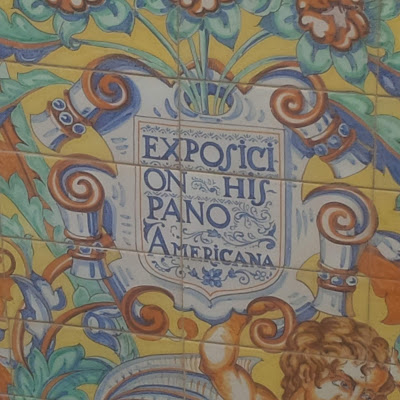The first sound
that catches my ear is of castanets being shaken by a street vendor. Across
the square someone is playing Unchained Melody on panpipes, a song which seems
quite out of place in Seville. Then I notice the clip-clop of horses circumnavigating
the central fountain. All this overlays the low hum of tourists chatting to one
another.
We are in the
Plaza de España in Seville, one of the city’s less heralded sights. Indeed,
I’m sure when I first visited eleven years ago it had been essentially
forgotten. It is found beyond the old tobacco factory, at the end of an avenue
of lovely orange and plane trees, where parakeets chirp to each other and policemen
stand around stroking and feeding snacks to horses.
It was built for
the Ibero-Americana Exposition in the 1920s, and looks very striking. A long crescent
of columns stretches between two towers. The red and yellow flag of Spain flies
over the central building, and there’s a moat crossed by handsome single arch
bridges whose balustrades are painted blue and white. You can rent a boat and
row yourself along the water is you so desire.
What I like most
is the series of paintings that extends the length of the crescent. The predominant
colours are blue and yellow, and the images are painted on tiles. Each shows
some episode from Spanish history, such as Columbus departing for the New World
from Huelva and explaining his plans to the King in Salamanca.
Many of the
paintings are dedicated to scenes from the reconquest of Spain by the Catholic
Kings. They show the Christian army bivouacked below the dramatic cliffs of
Cuenca, and the surrender of the Muslims in Granada and Málaga. It crossed my mind that in politically
correct Britain these pictures might be controversial, arousing the ire of some
too-easily offended busybody.
We take our
leave of the square to the sound of Strangers in the Night being played on
panpipes.



No comments:
Post a Comment